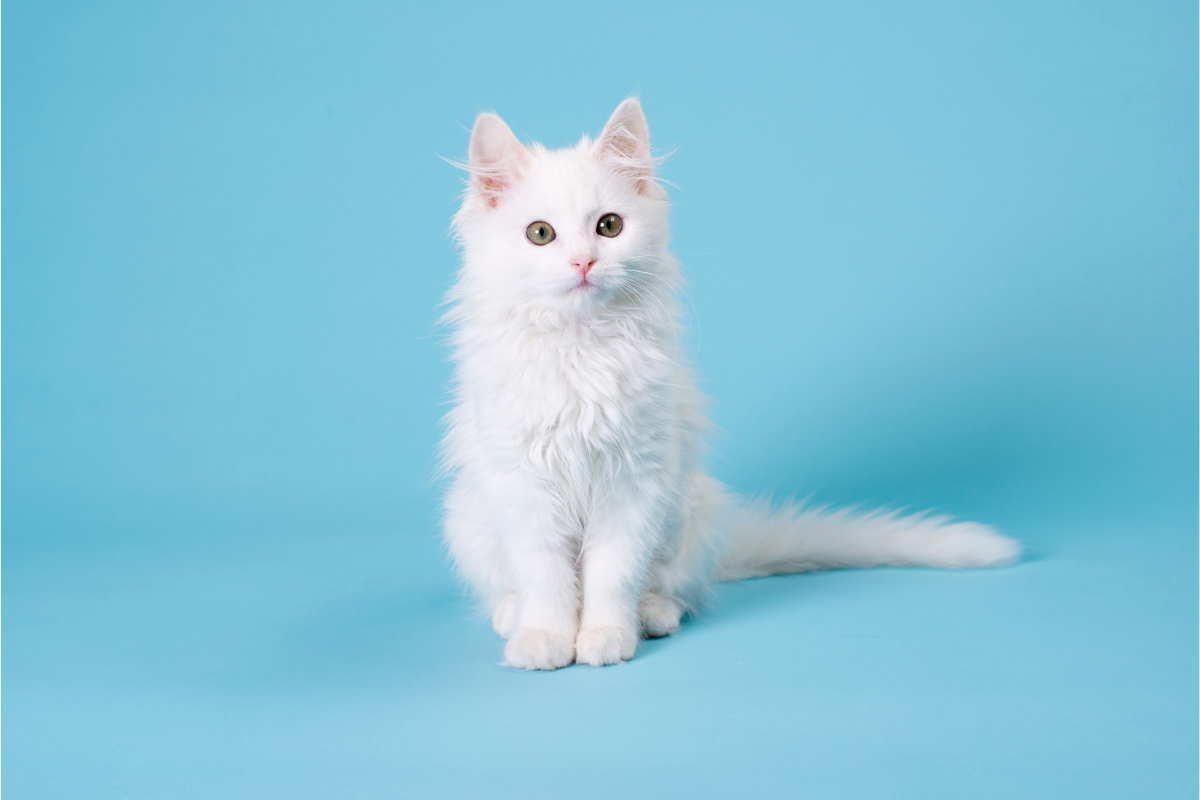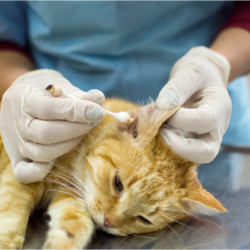Cat typhus, also known as feline panleukopenia, is a potentially fatal viral disease. Highly contagious and widespread in France, it mainly affects kittens and young cats. In this article, we take an in-depth look at the infectious agents responsible, the symptoms, diagnostic methods, available treatments and means of prevention. Our aim is to provide you with all the information you need to protect your feline effectively against this dangerous disease.
What infectious agent is responsible?
Cat typhus, or feline panleukopenia, is caused by the FPV virus (Feline Panleukopenia Virus), a single-stranded DNA parvovirus. This virus is extremely resistant in the external environment and can survive for several months or even over a year. FPV mainly attacks rapidly dividing cells, such as those in bone marrow and the intestinal wall, leading to severe immune suppression and digestive bleeding.
In France, this viral disease is endemic, causing local or regional epidemics that overwhelm the veterinary services. Every year, many cats and kittens succumb to this disease. Fortunately, a vaccine has been available for over 40 years to protect felines against typhus.
The virus is transmitted mainly via the faecal-oral route. Cats contract the virus by licking surfaces contaminated with the faeces of infected animals. Due to the high resistance of FPV, indirect transmission is common, often facilitated by poor hygiene. Close living quarters and overcrowded environments, such as animal shelters, also increase the risk of spread.
In pregnant cats, the virus can be transmitted to the foetus, leading to serious complications such as cerebral ataxia or death in utero. The impact of FPV on the lymphoid system destroys lymphocytes, causing immunosuppression. Intestinal tissues are also severely damaged, leading to severe diarrhoea.
What are the symptoms of typhus?
The symptoms of feline typhus are varied and often very serious. The disease manifests itself as severe gastroenteritis accompanied by prostration and panleukopenia. Here are the most common clinical signs:
- Anorexia: The cat stops eating, which rapidly worsens its general condition.
- Abdominal pain: Intense pain may be observed, making the cat very sensitive to touch.
- Dehydration: Due to frequent vomiting and diarrhoea, dehydration can become fatal if prompt treatment is not provided.
- Diarrhoea: Often haemorrhagic, diarrhoea leads to rapid loss of fluids and electrolytes.
- Vomiting: Vomiting is frequent and contributes to dehydration and deterioration in general condition.
- Fever and fatigue: The cat presents with a high fever and extreme fatigue, making it lethargic.
The incubation period for typhus is around 4 days. Initial signs include loss of appetite and fever. Vomiting and diarrhoea soon follow, often tinged with blood, leading to severe dehydration. If the virus reaches the bone marrow, it reduces the number of white blood cells, crucial for immune defence, increasing the risk of secondary infections.
Diagnosis is based on a blood test revealing panleukopenia and a stool test for the virus. Because the disease progresses so rapidly, rapid veterinary intervention is essential to increase the chances of survival.
How is the disease diagnosed?
Diagnosis of feline typhus involves several key steps. Viral antigens can be detected in faeces using agglutination tests or immunochromatography. A PCR test, carried out in the laboratory on a sample of faeces or whole blood, is also used to confirm the presence of the virus.
Clinical signs, such as digestive symptoms and general droopiness, point the veterinarian towards a diagnosis of typhus. Clinical examination will often reveal enlarged intestinal lymph nodes and severe dehydration. A blood test will reveal panleukopenia, characteristic of this disease.
In some cases, typhus can be devastating, leading to the cat’s death in a matter of hours with no apparent signs. However, it is important to note that not all vomiting/diarrhoea syndromes are systematically typhus. Diseases such as canine parvovirus or other viral infections can present similar symptoms.
To refine the diagnosis, the vet uses a combination of methods:
- Clinical picture: The animal’s digestive signs and general condition are assessed.
- Blood analysis: A blood count is taken to detect a drop in white blood cells.
- PCR test: This laboratory test confirms the presence of the virus in faeces or blood samples.
A rapid, accurate diagnosis is crucial to effective treatment and increasing the cat’s chances of survival.
What treatments are available?
Treatment for feline typhus is mainly symptomatic and supportive, due to the lack of specific antiviral therapies. The first step is to isolate the animal to prevent the spread of the disease, given that it is highly contagious.
Maintaining hydration is essential. Severely dehydrated cats are given infusions to restore water and acid-base balance. At the same time, broad-spectrum antibiotics are administered to prevent secondary infections, which can occur as a result of the immunosuppression caused by the virus.
Antiemetics are used to control vomiting and allow the animal to eat. Highly digestible food enriched with vitamins may be given to support the cat’s weakened body. In some cases, tube feeding is necessary if the cat is unable to eat on its own.
Vets also consider antiviral treatment with interferon, although its effectiveness varies. They intensively monitor the animal, which is often hospitalised to receive the necessary care.
For digestive symptoms, they use digestive dressings containing smectite to limit water loss and stem diarrhoea. Vomiting is treated with injectable drugs such as maropitant, which gives excellent results.
Veterinary surgeons strictly control the use of antibiotics. The 2012 Ecoantibio Plan restricts their use to cases where the pathogen has been clearly identified. They carry out an antibiogram to determine the effectiveness of antibiotics against secondary bacteria.
Early and intensive treatment is the key to maximising the chances of recovery. In the event of severe digestive problems, an emergency consultation is recommended to avoid fatal dehydration.
What can be done to prevent the disease?
Vaccination is the most effective way of preventing feline typhus. Vaccination is recommended for all cats, even those that do not go outside, as the virus can be carried indoors by clothing or footwear. Maternal antibodies protect kittens for 6 to 8 weeks after birth, but they should be vaccinated as soon as possible.
The European Centre for Cat Diseases recommends vaccinating kittens between 8 and 9 weeks of age, with a booster 3 to 4 weeks later. Annual vaccination is necessary to maintain optimum protection. The vaccination protocol often begins as early as two months of age, with two primary injections followed by annual boosters.
In addition to vaccination, it is essential to maintain a clean and healthy environment. The virus is highly resistant, so disinfect rigorously, especially if typhus is reported. Use diluted bleach to effectively remove the virus from contaminated surfaces.
Here are a few practical tips:
- Clean and rinse all objects and surfaces in contact with the cat.
- Use diluted bleach (250 ml in 5 litres of warm water) to disinfect.
- Leave for 10 minutes before rinsing with cold water.
- Isolate the animal if typhus is suspected or confirmed.
It is also not advisable to vaccinate pregnant cats because of the risk of neurological problems for the kittens. However, even vaccinated cats can, in rare cases, contract the disease. The cat typhus vaccine protects mainly against FPV, but not against other parvoviruses.





